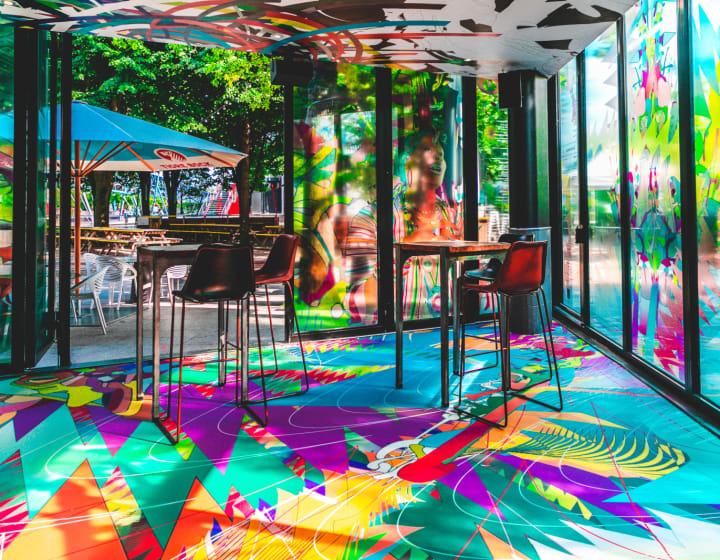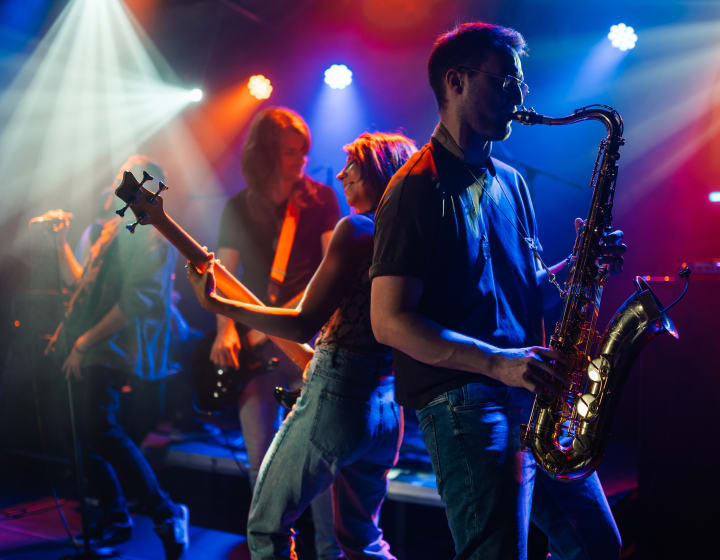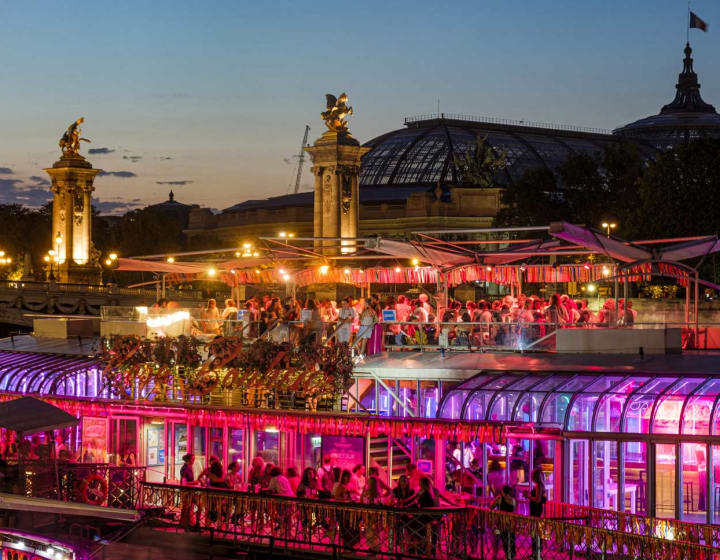Cabarets in Paris Region
- What to see and do
- Going out
- Cabarets
A cabaret evening? Moulin Rouge, Paradis Latin, or both?
Entrez dans l’illusion et le rêve au cabaret à Paris Region
The show must go on. If you’ve seen the film Moulin Rouge then you’ll be familiar with this song. Just like the film, the Parisian cabarets are an unforgettable experience. It’s hard to know what really goes on within their walls until you’ve experienced the wild excitement for yourself. The cabaret, a show, dance, song and dining venue, is a French institution with deep roots in the Paris Region. When visiting the capital, it’s difficult to avoid the districts where the cabaret rules. From Pigalle to the Latin Quarter, the show still goes on.
On the cabaret trail in Paris Region
The cabarets are deep-rooted in the history of Parisian art and culture. These places of festivity and togetherness have been attracting curious visitors for nearly 150 years. But they haven’t always hosted shows…
There were no shows in the first Parisian cabarets
Until the mid 19th century, the cabarets of Paris were nothing like the venues we know today. They were mainly places to sleep where people could eat and drink, as in a hotel or at the inn. In actual fact, there were three types of cabaret: those that only served **drinks; those that served food and drink; and the inns where you could also spend the night.
It wasn’t until the late 19th century that cabarets began to host performing artists. The cabaret then became a popular entertainment venue with music, poetry and other forms of live show.
Le Chat Noir, the cabaret that changed everything
When the Chat Noir opened in Montmartre in 1881, it changed the course of Parisian cabaret history. Founded by Rodolphe Salis, this cabaret not only served meals, it put on a show as well. It was especially famous for introducing shadow play, a show based on silhouettes projected on a screen, which attracted an eclectic audience.
Salis’ concept, of dinner and a show in an atmosphere of audacity that flouted convention, gained popularity in Paris. And that’s how it all began for the cabarets that keep Parisian nightlife buzzing even today.
Cabarets and the Belle Époque, an amazing story of entertainment and romance
The Belle Époque was the golden age of the Parisian cabaret. During this period, iconic establishments like the Moulin Rouge, which opened in 1889, and the Paradis Latin, rebuilt that same year by Gustave Eiffel, became the symbols of nightlife and entertainment in Paris. Thanks to affordable admission prices, the cabaret became a meeting place where artists rubbed shoulders with intellectuals and the middle classes mingled with workers.
Dancers, singers, jugglers, clowns and other performers brought the stage to life, captivating an audience that craved entertainment. Artistic genres were brought together in a mix of dancing and singing, comedy and theatre, transvestism and burlesque striptease acts. The French Cancan became the emblem of those glamorous evenings and contributed to the emancipation of women. Everybody who was anybody in Paris was under the spell of this remarkable concept and visitors came from across the globe, drawn by the excitement it generated in the world of art and culture.
The greatest cabarets in Paris
From Montmartre to the Latin Quarter, cabarets still create a buzz in the Paris nightlife. Most are famous beyond the borders of France and are well worth trying one of these evenings, instead of eating at a restaurant or going to the cinema.
Moulin Rouge, the most famous of them all
This hotspot needs no introduction! Founded in 1889, the Moulin Rouge is probably the most famous cabaret in Paris and even on the planet. With its dazzling red lights that can be seen miles away, its iconic windmill sails and its daring reputation, it truly is a Paris institution.
People come here to see the French Cancan and a whole line-up of world-famous performers. Time for a fun fact! In the film Moulin Rouge, the owner is Harold Zidler, whose name was inspired by that of the real-life founder of the Moulin Rouge, Charles Zidler. With his business partner, Zidler also established the famous Olympia Hall.
Crazy Horse, naughty shows and famous performers
The man behind this cabaret founded in 1951 was Alain Bernardin. Famous for its sensual and artistic shows, the Crazy Horse made its market debut with a slightly scandalous striptease show oozing with finesse. Located near the Champs-Elysées, it has always attracted famous artists such as Dita Von Teese, Arielle Dombasle and Conchita Wurst. The shows at this cabaret are a mix of glamour, elegance and audacity.
Paradis Latin, shows with a touch of humour
The Paradis Latin, the oldest Parisian cabaret of all, was renovated in 1889 by the one and only Gustave Eiffel. Since then, it has become an essential part of the Paris nightlife scene. Located near the Panthéon and Notre-Dame, this cabaret attracts the Paris smart set who come to witness with joy what the art of celebrating is all about. The shows are sexy, flirtatious, glamorous, sometimes funny and always colourful. Kamel Ouali, the choreographer, has been in charge of the dance aspects for several years.
Madame Arthur, the first transvestite cabaret in Paris
It opened in 1946 in the heart of the Pigalle district and was the very first transvestite cabaret to open in Paris. Madame Arthur is famous for its drag-queen and transvestite shows, which celebrate French music with an eccentrically modern twist. The artists are well known for their extravagant performances, flamboyant costumes and great talent when it comes to playing feminine characters with humour and panache. A big hats off to the wealth of LGBTQ+ culture.
La Nouvelle-Ève, the Belle-Époque venue
It still has the starry ceiling that has always added to its unique charm. Established in 1897, then renovated in 1949 in the Belle Époque style, The Nouvelle-Ève is one of Paris’ oldest and most elegant revue theatres. It has an intimate atmosphere, oozes with charm and puts on shows that pay homage to the Paris of yesteryear in all its elegant glamour. And the icing on the cake is, of course, that they perform the French Cancan here!
Also to be discovered
- Copyright image: © Laurent Baheux Paradis Latin




